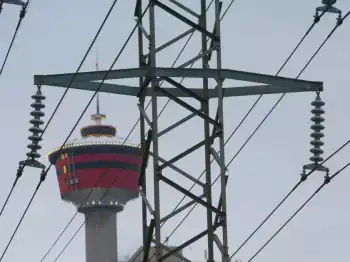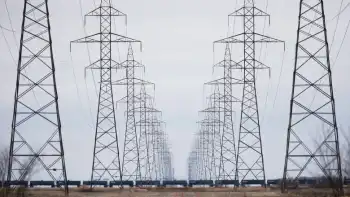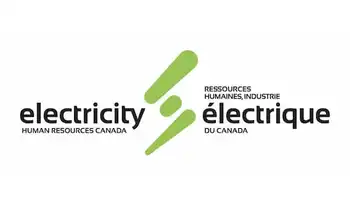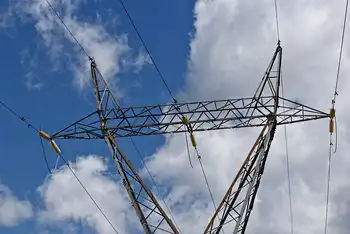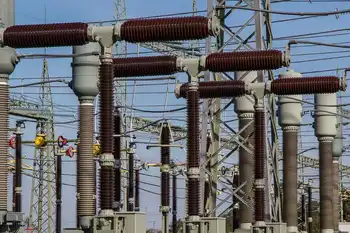Reducing the energy cost of IT
By Montreal Gazette
NFPA 70e Training - Arc Flash
Our customized live online or in‑person group training can be delivered to your staff at your location.

- Live Online
- 6 hours Instructor-led
- Group Training Available
Information technology could contribute 20 per cent of global carbon emissions within a decade, by some estimates. And in industries like banking or insurance especially, IT already makes up 30 to 50 per cent of an energy bill.
As that realization dawns at companies, schools and government offices across Canada, chief information officers (CIOs), are being asked to tackle major campaigns with a dual purpose — goodwill toward Earth, and cost control.
"Everyone was always focused on the impact of paper usage, heating, lighting, transportation," says Bill St. Arnaud, a green IT consultant and former chief research officer at CANARIE, an organization researching the next-generation Internet.
"Suddenly, they're discovering these global networks of computers, file servers and wireless devices are some of the worst polluters, and the geeky guy in the basement is the one you need to find a solution."
CIOs' ideas for a greener world run the gamut from practical energy-saving tips, to ruminations on the future of carbon-neutral networking.
Here are some of the priorities of Canada's IT gurus:
No Time Like The Present: Such are the savings reaped from greening networks, just 14 per cent of North American firms have suspended environmental programs in a down economy, compared with 13 per cent that are actually accelerating plans, Forrester Research found. Susan Doniz, CIO at Procter & Gamble's Canadian subsidiary, has seen less resistance to replacing desktop printers with centralized ones, for instance. "It's been very easy to sell [changes that] in the past were inconvenient, because of the cost savings," Doniz says.
Replace Bricks And Mortar: E-learning is "by definition green and cost-effective," asserts Brian Stewart, CIO of Alberta-based Athabasca University, which offers degree courses exclusively online. Stewart says universities across Canada are eager to follow Athabasca's lead: he spends just $153,000 a year on electricity to power virtual lectures, which translates to 110 kilograms of CO2 per full-time student (versus 2,150 kilograms per student at an average bricks-and-mortar campus).
Send Workers Home: Gary Davenport, VP of Information Technology at telecom provider MTS Allstream, has enabled over 600 employees — 40 per cent of the downtown Toronto office — to work remotely, facilitated by software such as Microsoft Office Collaboration Suite. By not commuting, employees annually save 550 metric tons of emissions, Davenport says.
Green The Setup: "Deep Freeze" software by Faronics lets Laura Williams, CIO of Peel District School Board — Canada's second biggest, serving Brampton, Caledon and Mississauga, Ont. — create a greener computer setup with power-saving features, then clone it onto 30,000 desktops. If a computer is tampered with, Williams' setup returns when the machine reboots. The result? Fewer tech support calls as well. "Even if you saved a dollar per computer on energy, that's $30,000," Williams says.
Pressure Manufacturers: Dave Codack, VP of employee technology and network services at TD Bank Financial Group, makes manufacturers furnish proof their products meet minimum efficiency thresholds. And the bank — which recently declared itself fully 'carbon-neutral' — doesn't dispose of IT equipment in landfill: it's either broken into parts and reused, or given to a raw materials recycler.
Choose Canada: Servers are the Internet's beasts of burden, storing and transmitting emails, music downloads, pictures, movies, and bank machine transactions — in increasingly unsustainable volumes. So CIOs hoping for savings have begun relocating massive "server farms" to cheaper pastures, and Canada's abundant hydroelectric power and adequate privacy laws are a prime draw. Consolidating servers from over 1,000 U.S. bank branches up to Toronto a few years ago was a no-brainer for TD's Codack: "It had a green effect, plus you're reducing the overall number, so obviously the business case is there."
Virtualization And Clouds: By creating virtual copies of his servers, Darrell Jones, senior VP and CIO of Canadian Western Bank, expects to reduce the physical count by two-thirds. "I want to lower costs, increase efficiency and reduce risk," Jones says. "Virtualization hits all of those levers." (Coming soon, say CIOs, will be liquid-cooled servers, whose excess heat could be tapped as energy, making them truly carbon-neutral. And "cloud computing": paying for on-demand access to software and servers over the Internet, as if computing were a public utility. "Clouds" are already gaining traction among large corporations, governments and universities.)
Sticks And Carrots: With very little fanfare, the first carbon tax in North America - the first of many on the horizon - went into effect in January in British Columbia. Schools, hospitals, universities and governments must lower their emissions, or contribute "offset" money to an environmental trust. "It's generally when they discover the CIO," Bill St. Arnaud says. "They're just flabbergasted by IT's impact on their bottom line."
Environmentally friendly IT isn't only of value to corporations and governments. There are plenty of easy steps to making home computing a greener experience.
• Google's free PowerMeter download tells you how much electricity you use at home, in real time, effectively nudging you to waste less. Optional Google-approved companion hardware, called The Energy Detective, is also available - some versions monitor solar and wind consumption as well (theenergydetective.com).
• Computer users of the future will tap the Internet just like a public utility: accessing desktop software and some hardware (like servers) online, without having to worry about installing, maintaining or troubleshooting the stuff themselves. Ottawa-based Eseri is an early player in the game, selling subscription access to an open-source "virtual desktop," with tech support and upgrades taken care of. Eseri runs on low-carbon-emission hydroelectricity, for added brownie points (eseri.com).
• Netbooks are the next-generation laptops: smaller, less powerful, and sold for only a few hundred bucks, their popularity is soaring as basic machines for penny-pinching businesses and students (some 139 million will have been sold by 2013, Information Network predicts). Add an Internet-based desktop software subscription from Eseri, and you've hit the sweet spot for green IT: dirt-cheap, clean-powered computing. Eseri can even revive that ancient Windows 486 machine stashed in your basement (netbookreviews.net).
• Billing itself as "the greenest search engine on the planet," Toronto- and Seattle-based Lavva.com is an example of an emerging generation of zero-carbon search engines putting the behemoths to shame. Lavva runs on hydroelectricity and buys offsets to whittle down its carbon footprint further. It advertises a "social networking" approach to search that's very "Z-Generation:" for every query typed into its Google-style box, a chat window appears giving all Lavva users the chance to weigh in with an opinion (lavva.com).





